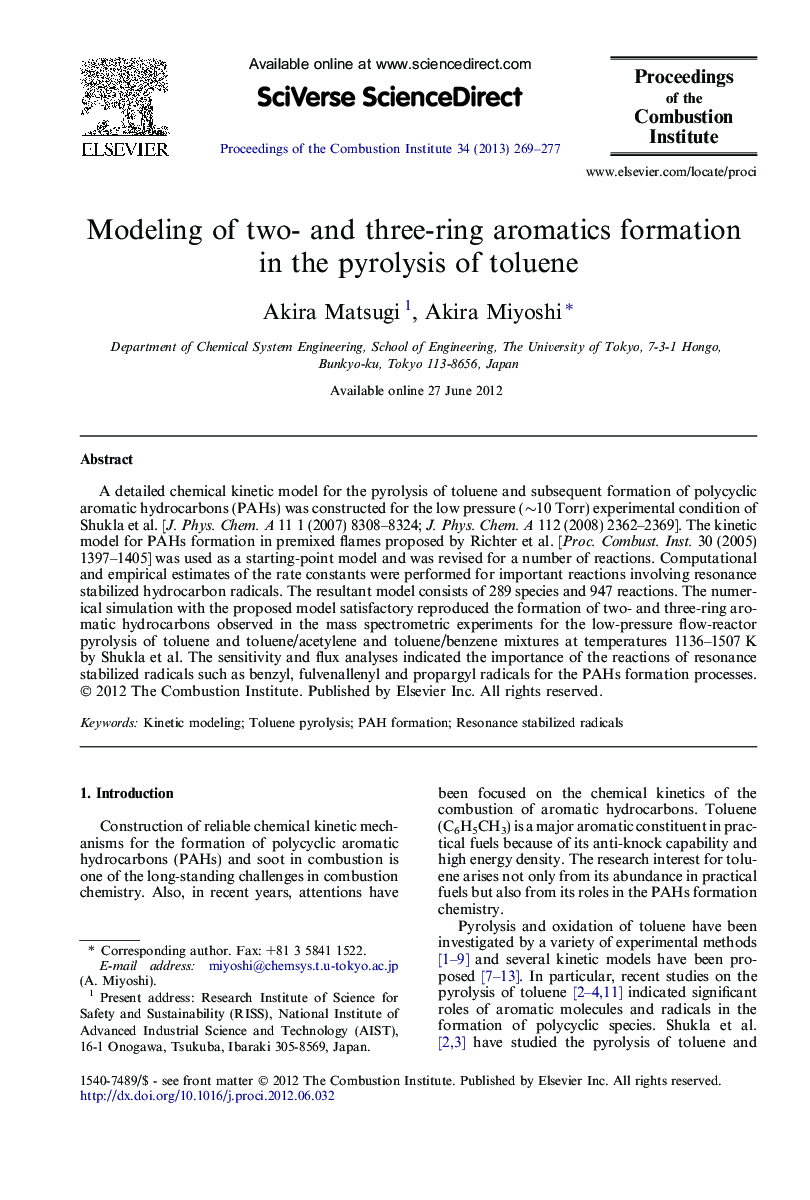| Article ID | Journal | Published Year | Pages | File Type |
|---|---|---|---|---|
| 241125 | Proceedings of the Combustion Institute | 2013 | 9 Pages |
A detailed chemical kinetic model for the pyrolysis of toluene and subsequent formation of polycyclic aromatic hydrocarbons (PAHs) was constructed for the low pressure (∼10 Torr) experimental condition of Shukla et al. [J. Phys. Chem. A 11 (1) (2007) 8308–8324; J. Phys. Chem. A 112 (2008) 2362–2369]. The kinetic model for PAHs formation in premixed flames proposed by Richter et al. [Proc. Combust. Inst. 30 (2005) 1397–1405] was used as a starting-point model and was revised for a number of reactions. Computational and empirical estimates of the rate constants were performed for important reactions involving resonance stabilized hydrocarbon radicals. The resultant model consists of 289 species and 947 reactions. The numerical simulation with the proposed model satisfactory reproduced the formation of two- and three-ring aromatic hydrocarbons observed in the mass spectrometric experiments for the low-pressure flow-reactor pyrolysis of toluene and toluene/acetylene and toluene/benzene mixtures at temperatures 1136–1507 K by Shukla et al. The sensitivity and flux analyses indicated the importance of the reactions of resonance stabilized radicals such as benzyl, fulvenallenyl and propargyl radicals for the PAHs formation processes.
